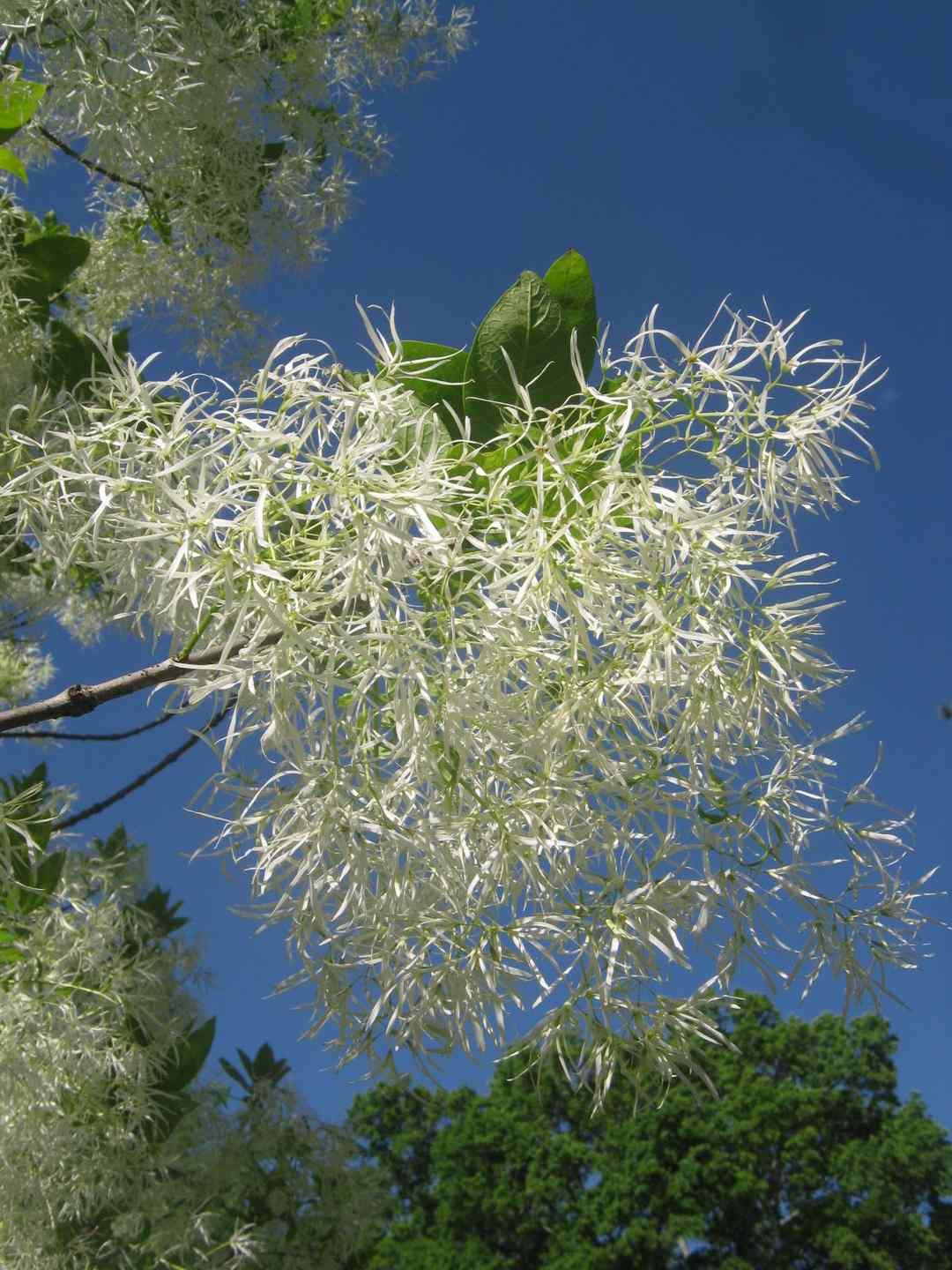How To Grow And Care For The Fringe Tree

emWhite, fleecy blooms hang beneath the branches. Photo by Steve Bender./em
TABLE OF CONTENTS
On This Page
Plant Attributes
Fringe Tree Care
Pruning
Propagating a Fringe Tree
Overwintering
The Fringe Tree Blossom
Common Problems With Fringe Tree
Fringe Tree FAQs
Fringe tree, or Old Man's Beard, (Chionanthus virginicus) has always played twelfth fiddle to dogwood, saucer magnolia, flowering cherry, Bradford pear, and numerous others choices for spring-flowering trees. Indigenous to the eastern U.S., it grows from Canada all the way down to the Gulf Coast. It's tougher than dogwood, more dependable than saucer magnolia, longer-lived than cherry, and smells better than a Bradford.
Fringe tree gets its name from its clouds of fleecy white, softly fragrant flowers that hang from the branches in late spring and early summer. Other common names here in the South are grancy graybeard and old man's beard. Trees can be either male or female. Males sport larger, showier blooms, and if grown alongside a male, females form attractive, blackish-blue fruits that birds like. Nurseries don't sell trees by sex, so you have to take your chances. But either sex is well worth planting.
Plant Attributes
Common Name: Fringe tree or old man's beard
Botanical Name: Chionanthus virginicus
Family: Olive
Plant Type: Perennial tree, shrub
Mature Size: 12-20 ft. tall and 12-20 ft. wide (outdoors)
Sun Exposure: Full sun, partial sun
Soil Type: Acid, moist, well-drained
Soil pH: Alkaline (>8.0), Neutral (6.0-8.0)
Bloom Time: Spring
Flower Color: Creamy white
Hardiness Zones: Choose from Zones 3-9 (USDA)
Native Area: North America
Fringe Tree Care
Plant fringe trees in moist, well-drained soil in full sun or partial shade. As with most flowering trees, more sun means more flowers. Dig the planting hole as deep as the root ball and two to three times as wide. After you place the tree in the hole, backfill with the soil you removed from the hole without additives or enhancements.
Water thoroughly when the hole is half full of soil and again when it is completely full, tamping down to remove air pockets. The tree won't withstand prolonged drought. Water before the soil around the roots has a chance to dry completely at root depth.
Light
Full sun or partial shade.
Soil
Moist, well-drained alkaline to neutral soil.
Water
Moderate needs for water, and will tolerate some drought.
Temperature and Humidity
The fringe tree is both heat and humidity tolerant.
Fertilizer
Unless the soil fertility is naturally moderate to high, fertilize annually with about an inch of compost or use a complete and balanced fertilizer according to the label instructions.
Pruning
Pruning is seldom needed. Flowers are produced on second year wood, so care must be taken when pruning to allow for the next year's flowering.
Propagating a Fringe Tree
An established fringe tree does not transplant well. These plants are better grown from seed. The seeds require double dormancy; a warm period followed by cold period for root and shoot initiation to take place. If sown in fall outside, seed will germinate the second spring as first year seedlings do not put off much shoot extension.
Overwintering
During the winter, the fringe tree is a delicacy for rabbits and other wildlife. To protect the shrub or growing tree, create a fence formed from hardware cloth. This is similar to chicken wire, but with smaller holes.
The plant's branches should be tied in toward the center, and a circle of hardware cloth placed around the outside. The base of the hardware cloth should be buried in soil or mulch. This protection should be installed late November and removed in mid-April.
The Fringe Tree Blossom
The appeal of the fringe tree lies in its generous clusters of fragrant, fringed white blossoms, which appear in late spring after other spring-flowering trees have finished blooming. The fringe tree is dioecious, meaning male and female flowers occur on different plants. The male flowers tend to be showier than female flowers, but both are lovely.
Each flower is comprised of four long, narrow petals and occurs in drooping, 4 to 8-inch long clusters at the ends of the branches. When in full bloom, the delicate, airy-looking blossoms give the tree a cloud-like appearance. The flowers give off a delicate, sweet, spicy fragrance, making the plant all the more endearing in the spring landscape.
As with most flowering trees, the more sun the better if you are trying to maximize blooming potential.
Common Problems With Fringe Tree
No serious insect or disease problems occur with Fringe tree. Some susceptibility to scale and borers (particularly when grown in dry locations).
Fringe Tree FAQs
Genus name comes from the Greek words chion meaning snow and anthos meaning a flower for the snow white flowers of C. virginicus. A member of the Oleaceae genus, fringetree is related to the lilac, privet, forsythia, jasmine, ash tree and olive tree.
If a male and female tree are planted, fruit in clusters of grape-size, dark blue, fleshy drupes resembling olives will appear in late summer. The fruits are favored by birds, such as blue jays, cardinals, mockingbirds and wild turkeys.
How long can [Plant Name] live?
What plants are similar to [Plant Name]?
Where should I place / Where should I put [Plant Name]